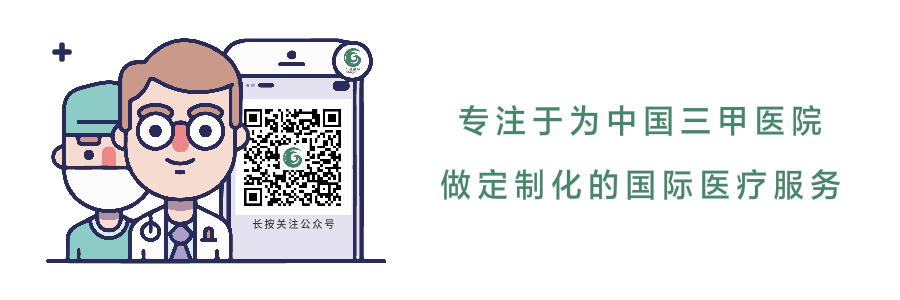-
News & Events

Chief Physicians from The Second Affillated hospital of Zhejlang University School of Medieine: The Diagnosis Given by Deepseek is Very Close to Our Clinical Diagnosis! AI analyzes so quickly; How can doctors compare? We are afraid of losing their jobs.
This time, we, doctors, have to face it seriously and learn from it!
According to a report from Xinhua Daily, recently, Dr. FAN Junqiang, Chief Physician of Thoracic Surgery at The Second Affillated hospital of Zhejlang University School of Medieine, consulted Deepseek when treating a 48-year-old patient.
Dr. FAN inquired: "Today, I examined a 48-year-old male patient. He has a nodule in his right upper lung, approximately 8mm in size, which has been monitored for six months with no significant change. It is a ground-glass nodule. What is the diagnosis, and what should be the next step in treatment?"
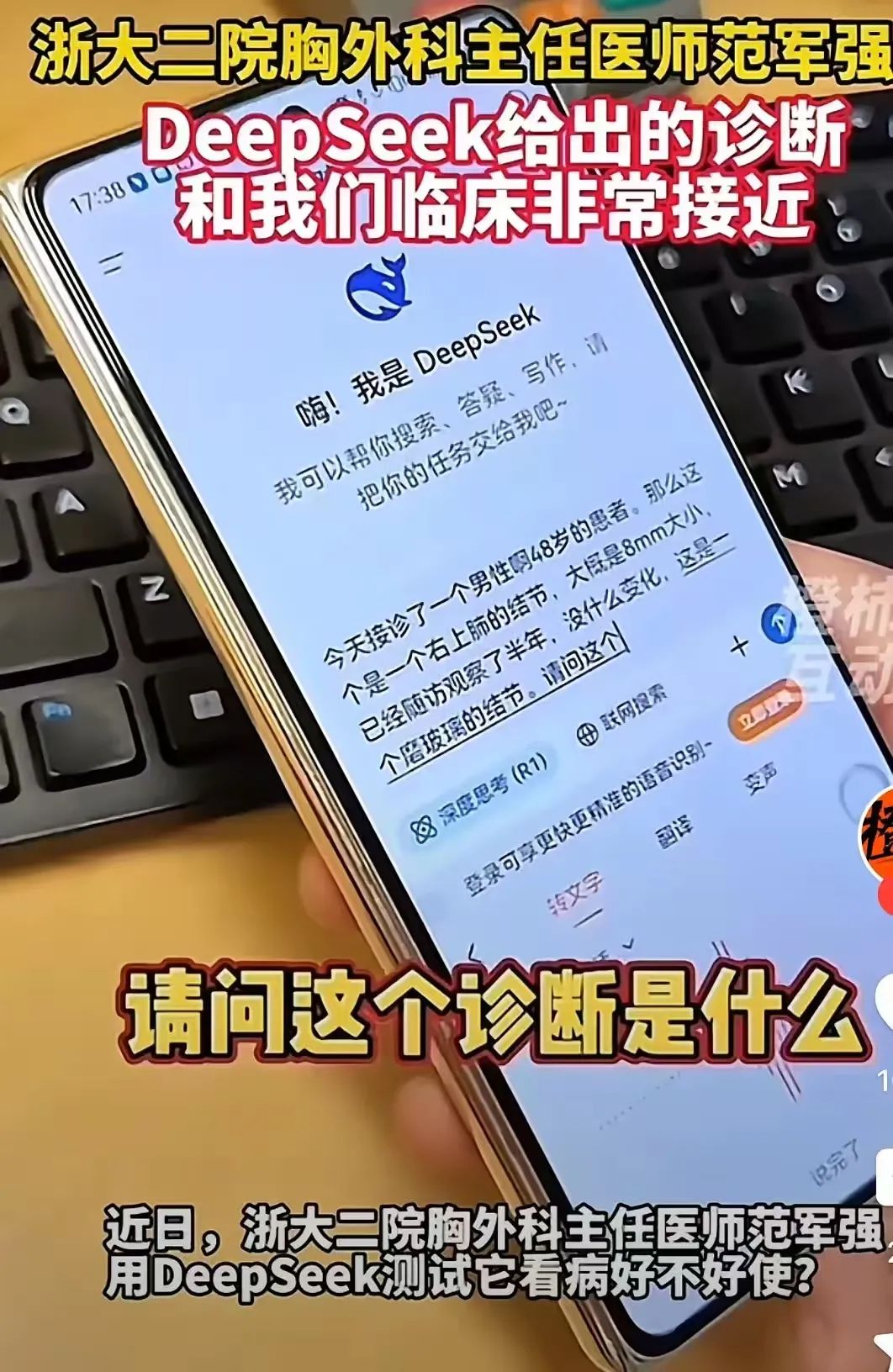
To his surprise, within a few seconds, Deepseek provided a detailed analysis and even gave suggestions based on the latest guidelines. Additionally, Deepseek pointed out that the information provided by the inquirer, "ground-glass nodule," was too vague. It needed to be clarified whether it was a "pure ground-glass" or "mixed ground-glass" nodule.
Wow, Deepseek can even correct the information provided by the inquirer—this is incredible!
Finally, Dr. FAN commented: "Deepseek's diagnosis is very objective. Its suggestions and diagnoses for our patient are very close to what we do clinically..."
Deepseek can diagnose, treat, and provide recommendations. For several days, many department heads have expressed their views.
On February 10th, Dr. HOU, Deputy Chief Physician of the Infectious Disease Department at the Lu'an People's Hospital, Anhui Province, posted an article saying, "DeepSeek can fully handle many tasks of doctors. I asked Deepseek for antibiotic adjustment suggestions for a patient in the gastroenterology department, and it gave me an answer in 56 seconds. It's really pressuring—who knows when doctors will be replaced by AI?"
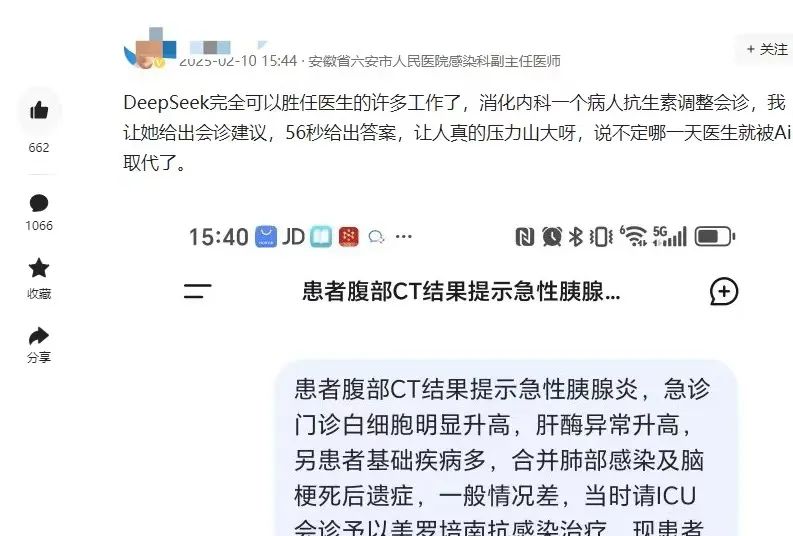
Dr. HOU consulted Deepseek with the following information: The patient’s abdominal CT results suggest acute pancreatitis, with a marked increase in white blood cells and elevated liver enzymes in the emergency department. In addition, the patient has multiple underlying conditions, including pulmonary infection and sequelae of cerebral infarction, and is in poor general condition. At that time, an ICU consultation was requested, and meropenem was administered for infection treatment. Currently, the patient’s inflammatory markers have significantly decreased. And he no longer have symptoms like chills or fever. Therefore, a consultation with the department is requested to assist in stepping down the antibiotic regimen. Please provide antibiotic usage recommendations.
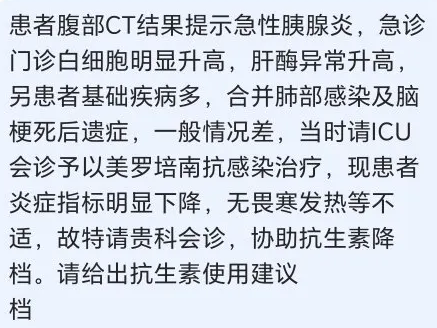
Unexpectedly, within just a few seconds, Deepseek provided a detailed and accurate judgment and suggestion. It clearly outlined which medications should be used, precautions, and treatment methods. Moreover, the treatment advice was based on the latest guidelines, and it anticipated and analyzed things the doctors might not have thought of, guiding them step-by-step on what to do.
Wow, this is incredibly powerful. Which doctor can analyze a case so thoroughly, clearly, and logically? No wonder department heads are worried about doctors being replaced and losing their jobs.”
On February 11, Director of radiology at a Grade-Three Class-A hospital in Sichuan wrote a long post expressing concern about the future career prospects of his colleagues. He said: "AI models like DeepSeek are so powerful that they astonish me. With their immense data processing capabilities and deep learning algorithms, they have already made a significant impact in the medical field. DeepSeek's applications in disease diagnosis and treatment optimization have sparked widespread attention and show great potential."
"I gave Deepseek the patient information, and 30 seconds later, it produced a professional and comprehensive analysis. The clarity of its reasoning and the thoroughness of its analysis are comparable to that of a chief physician at a Grade-Three Class-A hospital. As someone involved in diagnosis and pathology, I am really concerned about our future development. These AIs can read thousands of images in a minute, detecting even the slightest details that we, as doctors, cannot match using just our hands and eyes."
With the development of DeepSeek, many doctors are both amazed by the rapid advancement of AI and worried about their future career paths. What should we do?
Doctors are only human, and sometimes we cannot compare to AI
From now on, doctors must take AIs like DeepSeek seriously.
Let’s focus on DeepSeek, which has undoubtedly become one of the hottest topics in the medical field since the Chinese New Year of the Snake. This domestically developed large model directly challenges global tech giants like OpenAI and Google, and even managed to single-handedly cause significant losses for major AI stocks in the US.
Compared to overseas models, DeepSeek is trained mainly via Chinese, making it more accurate in processing complex Chinese vocabulary and contexts. As a result, its text output is more fluent and natural, fitting the Chinese environment. At the same time, its logical reasoning process is transparent and supports deep optimization for specific scenarios, including in healthcare.
DeepSeek holds a natural advantage in disease diagnosis and treatment. It can correct inaccurate information provided by the user, something previous large models couldn't do.
In earlier models, you needed to input a very standardized format, for example: “Please analyze the following case: 65-year-old male with hypertension and diabetes, chief complaint of chest pain and shortness of breath for 2 hours. Please: 1. List possible diagnoses and their bases 2. Suggest necessary lab tests 3. Provide emergency treatment plans 4. Point out key differential diagnosis features.”
But with DeepSeek, you can use casual language like: “65-year-old male, with a history of hypertension and diabetes for years, suddenly has chest pain and can’t catch his breath for two hours. What should I do now?” Its logical and analytical ability is so strong, the judgments and suggestions it provides are on par with those of a seasoned professional.
In fact, aside from DeepSeek, there are many powerful AIs.
For example, OpenAI’s GPT-3 program can identify cues from casual audios, diagnose and predict early-stage dementia with 80% accuracy.
The ophthalmology AI “CARE” can accurately screen 14 types of eye diseases in one go. Prof. LIN Haotian, Vice Director of the Zhongshan Ophthalmic Center, Sun Yat-sen University, once mentioned that CARE can identify normal and abnormal retinal images, including diabetic retinopathy, hypertensive retinal changes, glaucoma, pathological myopia changes, and more. Its diagnostic accuracy has improved from 92.1% to 95.2% after clinical trials across 35 different medical institutions.
Scientists from Google, Google Brain, and Verily developed an AI for diagnosing breast cancer, and its performance even surpassed that of professional pathologists. Pathology diagnoses are known to heavily depend on the skills of the pathologist, and even for the same patient, different pathologists may provide significantly different diagnoses. The agreement rate among pathologists for breast cancer diagnosis is only 75.3%. In some atypical cases, the agreement rate drops to just 48%, meaning less than half.
Pathologists need years or even decades of training to accumulate the experience necessary to become qualified, let alone excellent pathologists. In areas with limited medical resources, obtaining sufficient training to gain experience is an unattainable luxury.
However, scientists from Google and Verily divided individual pathology slides into tens of thousands to hundreds of thousands of 128x128-pixel small regions, with each region possibly containing several tumor cells. They then provided numerous tissue slides of tumors and normal tissue for an AI to learn. In a short period, this AI mastered pixel-level techniques, enabling it to distinguish tumor tissue from healthy tissue by identifying pixels marked as “tumor.”
Researchers once invited a pathologist to compete against AI. The pathologist spent 30 hours carefully analyzing 130 slides and providing a diagnosis. In the subsequent evaluation based on sensitivity (how many correct tumors were identified) and false positives (how many normal tissues were misdiagnosed as tumors), the pathologist's accuracy was 73.3%, while the AI achieved an accuracy of 88.5%.
As doctors, we are ultimately just human, with limited abilities compared to the powerful AI. In the face of AIs like DeepSeek, what should we do?
AI may not replace industries, but it will certainly replace those who don’t use it!
The era of AI has fully arrived. Many doctors are worried about losing their jobs. What should we do? I don’t know the answer, but I want to tell all doctors one thing: AI may not replace entire industries, but it will certainly replace those who don’t know how to use it!”
While DeepSeek continues to be a hot topic, a doctor in the Department of Cardiology at Changhai Hospital, affiliated with the Naval Medical University, told me: “If DeepSeek is going to replace doctors, then internal medicine will definitely be the first to go. There’s no doubt about it. I’ve recently witnessed the power of DeepSeek. Its logical analysis ability is so strong, no internal medicine doctor can match its knowledge base and the variety of analytical scenarios it considers.”
Yes, it’s undeniable that the future of healthcare belongs to AI.
In November 2024, the National Health Commission and other departments jointly issued the Guidelines for AI Application Scenarios in the Health Industry, which further outlines the direction for AI applications in the medical field.
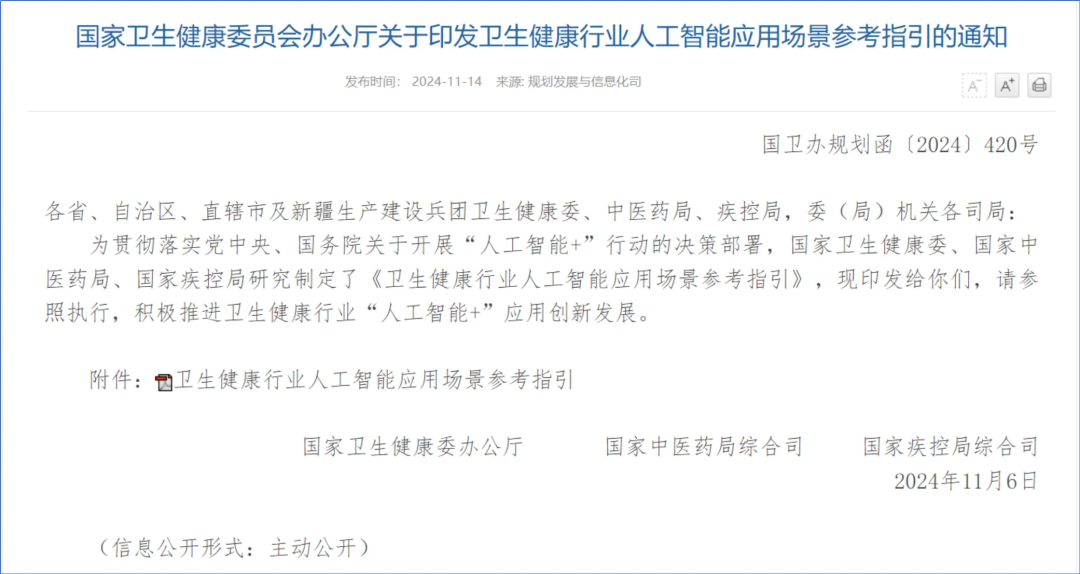
The Guidelines cover 84 specific scenarios in four major categories: medical service management, primary public health services, health industry development, and medical teaching and research. These scenarios include intelligent medical image diagnosis, intelligent decision support for general practitioners, smart clinic triage, and intelligent drug development, among others.
The document states that healthcare is deeply integrating with AI and big data across various aspects of the industry. With the rapid development of AI and big data applications, they are expected to drive the pharmaceutical industry's research, services, and applications toward more efficient and intelligent directions.
Therefore, the future belongs to AI, and by 2025, the application of AI in healthcare will see significant progress.
For now, we should stop worrying about whether AI will replace doctors. After all, AI is just a tool, and it requires people to use it. Doctors need to immediately understand what AI is all about. It’s unclear which industries AI will eventually replace, but it will definitely replace those who don’t know how to use it!
